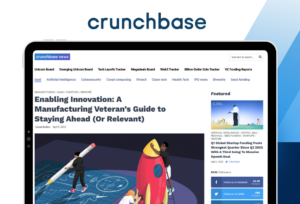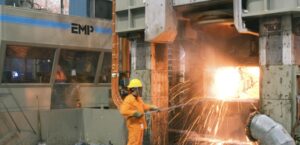Creating Accurate Forecast Models

By Dan Diaz & Leigh Lathrop
The COVID-19 pandemic has created disruptions to almost every aspect of how we work, interact, gather, and consume. These changes in social behavior and buying habits have resulted in a worldwide air of uncertainty. Eventually, we will turn the corner and move back to more traditional buying habits and production levels. Still, some seem to think that this pandemic crisis may leave some degree of permanent change to our national and global economies.
Understanding how these fluctuations in demand and the new buying trends will affect your company should be of paramount importance. Having the right type of products and services will allow forward-thinking companies to take advantage of new markets and the shortcomings of competitors that have not prepared.
Savvy business leaders need to reevaluate their business models and sales forecasts to be more in-line with the changing landscape. Here are a few topics to consider when evaluating your future sales during this season of change.
Evaluate your customer’s health and purchasing plans. You will not be surprised to find that some of your historically consistent customers were not able to weather the storm and might be falling to the wayside. Be sure to keep the lines of communication open so that you can adjust your projections. On the other hand, there may be instances where your customer is doing very well in this crisis and may need additional products and services to support their growth. Take advantage of the symbiotic relationship you have with your customers and piggyback on their success.
Build a realistic plan based on accurate sales projections. By having a firm understanding of your sales projections during the transition period on the way back to recovery, it will become apparent how aggressive you will need to be to address issues like expenses, cash flow, credit, and capital expenditures. Focus on quick return-on-investment opportunities and hold off on unnecessary costs until the company’s health is repaired.
Evaluate your inventory levels. If your forecasting analysis shows a slower than expected recovery due to depressed demand, look at your inventory levels and purchasing plans, and adjust accordingly. Slow-moving inventory ties up cash flow and consumes resources. Make every effort to have the right inventory in reasonable quantities.
Shore up any supply chain issues. According to the Institute of Supply Management, 75% of US companies are experiencing some supply chain disruption due to the global outbreak. 44% don’t have a plan to deal with the disruption on this scale. Develop a supplier contingency plan if suppliers cannot remit orders. Evaluate all facets of supply, such as personnel resources, material, logistics, and location.
Understand the factors that affect the buying habits of your market. When analyzing future demand, it is standard practice first to evaluate historical demand and make projections. This traditional practice may be problematic in a time when regular buying habits are in flux. Make a concerted effort to understand the various factors that affect the buying decisions of the markets you are concerned with. You may find that recent changes in perception due to geographical, social, and material suitability may result in significant changes to the way consumers view your products.
Build a Collaborative Forecasting Model. A collaborative process can be well-suited to create a demand forecast that considers the various factors that affect your products’ buying trends. Besides just the historical evidence, look at the associated economic trends, and gain insight into different demand and supply chain planning participants. You may also find seasonal changes and geographical locations to introduce new factors that should be considered.
Develop Promotions or Discount programs to counteract negative buying trends. As you evaluate your future sales projections, you will most certainly stumble on products or services that have recently seen negative buying trends and may need some prodding to spur sales. One of the more popular ways to ramp up sales and free up cash flow is to develop sales promotions. These promotions may focus on profitable product lines or help move out slow-moving inventory. Successful programs can also take advantage of changes in buying trends and increase consumer visibility. Be aware that certain degrees of current buying trends and lifestyle changes due to the pandemic may become engrained as the new norm. Investigate what your target audience responds to and if there are any trends toward new marketing approaches.
Effective use of a modern ERP system, such as Infor CloudSuite Industrial (CSI), is critical for monitoring, forecasting, evaluating, and reacting to market trends. Such a comprehensive, well-integrated ERP System will allow you to assess and consider all the various factors that may affect your future production demand. From there, you can build a forecast that will not only prepare you to address the changing buying trends but will position your company for success by helping you manage your production, quality, performance, costs, and customer interactions.
Key CSI features for creating and implementing accurate forecasts during and after the COVID-19 pandemic include:
- Advanced mathematical trend analysis using various curve fitting models for both sales projections and optimizing inventory levels
- Collaborative Forecasting capability combining multiple sources of sales predictions
- Web-based portal capability for both customers and vendors
- Customer Relationship Management functionality
- Discounts and Promotional pricing capability for specific groups, markets, or end-users
- Raw Material, Work-In-Process, Sub-Assembly, and Finished Goods Inventory Reporting
- Cash Management and Forecasting (Cash Impact Report, Cash Receipts Due Report, and Cash Requirements Report)
An experienced ERP consulting firm can help identify opportunities and assist with the best investment in your ERP system. This includes reporting and managing your response to COVID-19. Decision Resources has been helping manufacturers get the most from their business systems and technology for more than 40 years. Leverage our ERP consulting expertise to help you work through and recover during this exceptional era. Contact us today.
Similar Blogs

Decision Resources Featured on Crunchbase

Chips, drugs, and steel — how to prepare for Trump tariffs





